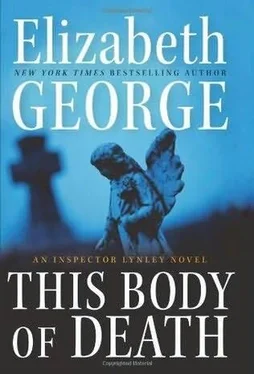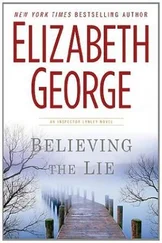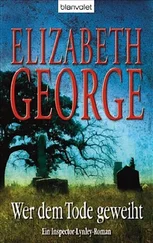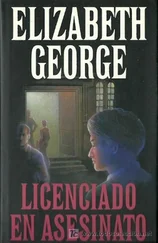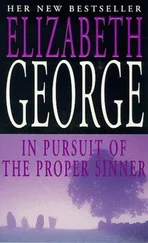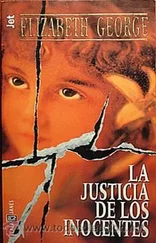“Drinks tonight, luv?” He sounded extremely intense.
“Drinks? Who the hell…? This is DS Barbara Havers. Who is this?”
“I realise that. Drinks tonight, luv?” He spoke as if through gritted teeth. “Drinks, drinks, drinks?”
At this, Barbara twigged. It was Norman Whatsisname from the Home Office, her own official snout, brought to her courtesy of Dorothea Harriman and her friend Stephanie Thompson-Smythe. He was giving her the code words and they were meant to meet at the Barclay’s cash-point machine in Victoria Street and he had something for her and-
“Bloody hell,” she said. “Norman. I’m in Hampshire. Tell me on the phone.”
“Can’t do, darling,” he said breezily. “Absolutely crushed with work at the moment. But drinks tonight would be the ticket. How about our regular watering hole? C’n I talk you into a gin and tonic? At the regular place?”
She thought frantically. She said, “Norman, listen. I c’n get someone there in…let’s say an hour? It’ll be a bloke. He’ll say gin and tonic, all right? That’s how you’ll know him. In an hour, Norman. At the cash-point machine in Victoria Street. Gin and tonic, Norman. Someone’ll be there.”
In the U.K. “detention at the pleasure of the reigning monarch”-a euphemism for imprisonment for life-is the only sentence that can be given to someone who is convicted of murder. But that is the law as it is applied to murderers over twenty-one years old. In the case of John Dresser, the killers were children. This, as well as the sensational nature of the crime, could not but have had an impact on Mr. Justice Anthony Cameron as he considered what recommendations he would make upon intoning the required sentence.
The climate that surrounded the trial was hostile, with an undercurrent of hysteria that could be seen most often in the reaction of those gathered outside the Royal Courts of Justice. Whereas within the courtroom, there was tension but no overt display of aggression towards the three boys, outside the courtroom, this was not the case. Initial displays of rage towards the three defendants-characterised first by the moblike gatherings at their homes and then by repeated attempts to attack the armed vans in which they daily traveled to and from their trial-segued into organised demonstrations and culminated in what became known as the Silent March for Justice, a noiseless gathering of an astonishing twenty thousand people who walked the distance from the Barriers to the Dawkins building site, where they were led in candlelit prayer and where they listened to Alan Dresser’s broken eulogy for his little boy. “John’s passing cannot go unmarked”-Alan Dresser’s words of conclusion-became the watchword for public sentiment.
One can only imagine how Justice Cameron wrestled with his decision regarding the recommendation he would make. It was not for nothing that he’d long been known as “Maximum Tony” for his propensity to let stand the maximum sentence at the conclusion of trials in his courtroom. But he’d never been faced with ten-and eleven-year-old criminals before, and he could not have been blind to all the ways in which the perpetrators of this horrible deed were themselves only children. His brief, however, demanded he consider only what would be appropriate for both retribution and deterrence. His recommendation was a custodial sentence of eight years, a punishment that, in the eyes of the public and the tabloid press, was deemed akin to walking away scot-free. Thus a series of heretofore unheard-of legal maneuvers were made. Within a week, the Lord Chief Justice reviewed the case and increased the sentence to ten years, but within six months the Dressers had amassed a petition of 500,000 signatures demanding that the killers be jailed for life.
This was a story that refused to die. The tabloids had seized hold of John Dresser’s parents and of John himself and had made his death a cause célèbre. Once the verdicts were handed down in the trial of his killers, their identities and photographs could be revealed to the public, as could salient details of his murder. The monstrous nature of his killing became a rallying point for those who deemed punishment the only appropriate response to such a crime. Thus the Home Secretary became involved, increasing the sentence once again to an incredible twenty years in order, he said, “To assure the public that their confidence in the judicial system is not misplaced, to allow them to see that crime will be punished, no matter the age of the perpetrator.” There the sentence remained until it went before the European Court in Luxembourg where it was successfully argued by the boys’ lawyers that their rights were being infringed by the fact that a politician-who would perforce be influenced by public opinion-was allowed to set the terms of their imprisonment.
When the boys’ prison term was reduced back to ten years, the tabloids flung themselves once again into the fray. Those who loathed the entire idea of European unification, seeing it as the root of all evils in the country, used the Luxembourg decision as an example of outside intrusion into the internal affairs of British society. What would come next? they pondered. Would it be Luxembourg forcing the euro upon us? What about a declaration that the Monarchy would have to be abolished? Those who supported unification saw the wisdom in making no comment at all. For any agreement with Luxembourg’s decision was a dangerous position to take, somehow implying that a mere decade was suitable punishment for the torture and death of an innocent baby.
No one could possibly envy the officials-elected or not-who had to make the decisions about the fate of Michael Spargo, Reggie Arnold, and Ian Barker. The nature of the crime has always suggested that the three boys were deeply disturbed, social victims themselves. There can be no doubt that their family circumstances were wretched, but there can also be no doubt that other children grow up in circumstances just as wretched or worse and they do not kill small children in reaction.
Perhaps the truth is that on their own as individuals the boys would not have committed an act of violence such as this one. Perhaps the truth is that it was a confluence of events that day that led to the abduction and the death of John Dresser.
As an enlightened society, surely we must admit that something at some level was wrong with Michael Spargo, Reggie Arnold, and Ian Barker, and equally as an enlightened society, surely we owed those three boys relief in the form of direct intervention long before the crime ever occurred or at the very least therapeutic assistance once they were taken from their homes and held for trial. Can we not say that in failing to provide either intervention or assistance we as a society failed Michael Spargo, Reggie Arnold, and Ian Barker just as surely as we failed to protect young John Dresser from their attack upon him?
It’s a simple matter to declare the boys evil, but even as we do so, we must keep in mind that at the time of the crime’s commission, they were children. And we must ask what purpose is served by putting children on public display for a criminal trial rather than by immediately providing them with the help they need.
SHE’D SAID AFTERWARDS, “I’M NOT IN LOVE WITH YOU. IT’S just something that happened.”
He’d replied, “Of course. I understand completely.”
She’d gone on with, “No one can know about this.”
He’d said, “I think that might be the most obvious point.”
She’d said, “Why? Are there others?”
“What?”
“Obvious points. Other than I’m a woman, and you’re a man, and these things sometimes happen.”
Of course there were other points, he’d thought. Aside from raw animal instinct, there was his motivation to consider. There was hers as well. There was also what now, what next, and what do we do when the ground has shifted beneath our feet.
Читать дальше
